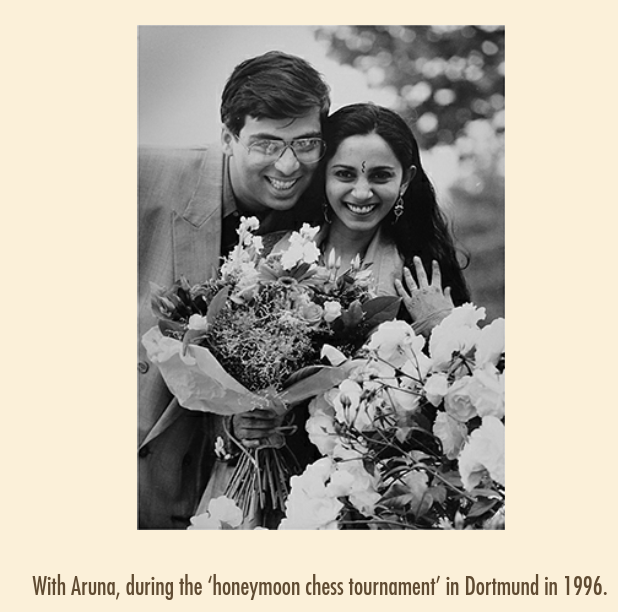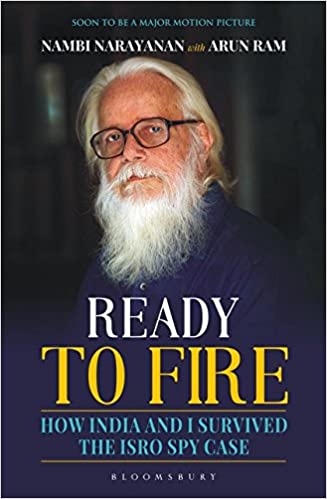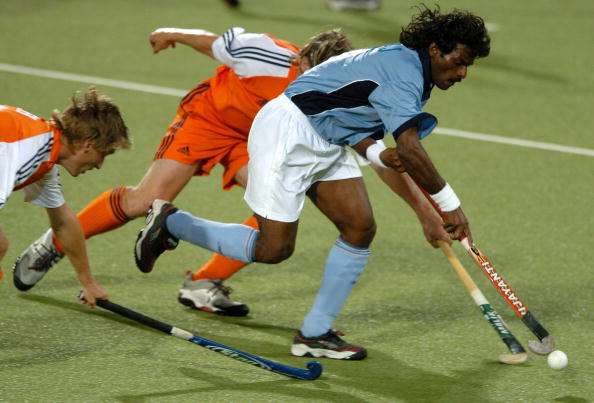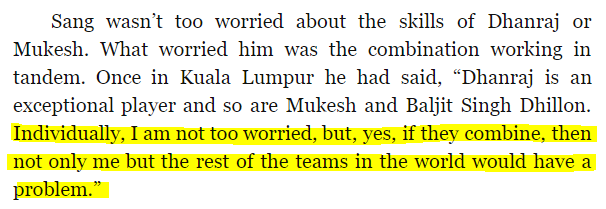Introduction
Sri Vaishnavas, who worship Vishnu as the supreme being, revere Kulasekara Alvar as one of the twelve Alvars. Reading about an Alvar’s life story and teachings leaves us convinced that surely, this Alvar must be the supreme Vishnu Bhakta—until we learn about the next Alvar. This sentiment is strong when we read the amazing story of how a powerful Chera king became a most revered saint and reinvigorated the deep love and reverence of the common folk of Southern India for Sri Ramachandra.
The twelve Alvars, along with the sixty-three Nayanmars (Saivaite saints of dharma) were instrumental in the recovery and rejuvenation of Vaidika dharma in Southern India and Tamil Nadu. Historians place the Alvars in the 6th to 9th century CE. However, a deeper, transcendental truth of Vaishnava tradition holds that the lifetimes of the Alvars were even more ancient and they intertwine in different ways. Their contributions to dharma, their saintly lives and their powerful poetry and literature started the Bhakti movement in India that spanned more than a thousand years. Their influence has shaped dharma traditions all over India.
Kulasekara Alvar was a great Chera king who gave up his kingdom and all royal privileges and surrendered himself at the feet of Bhagavan Vishnu. His Tamizh poetry overflows with bhakti for the avatars of Sri Rama and Sri Krishna. They are full of compassion and love for the common people who were devotees of Bhagavan. People in Tamil Nadu have sung the sacred Naalaayira Divya Prabandhams, which include his “Perumal Tirumozhi” pasurams, for over a millennium. Through his compassion for fellow human beings, and his deep yearning to be forever close to Mahavishnu, Kulasekara Alvar became an inextricable part of the Vishnu temple at Tirumala. His contributions to the Bhakti literature, Vaishnava traditions, and the unbroken dharmika unity across India are immeasurable.
The work by M.P. Srinivasan is the primary reference for this post.

Historical Background
Books place Kulasekaran’s birthplace as Kollinakar, Kozhikode, Vanjikkalam, and Kootal. Scholars have examined several authoritative Vaishnava texts to gain a clearer picture, and this section presents a summary of their findings.
King Thritavritan, who ruled the mountainous kingdom of the Chera, was childless for long. Through the blessings of Vishnu, a son was born on the in the Maasi month of the Paraabhava year on a Friday in Thiru-Vanjikkalam. The king named him Kulasekaran, seeing him as a symbol of the divine Kaustuba gem that adorns Sri Vishnu.
As a prince, Kulasekaran learned all the required princely duties, including the martial arts and administrative skills. He expanded the Chera kingdom by defeating the other two crowned kings of the south, the Cholas and Pandyas, to become the sole monarch and earned the title of ‘Kollikaavalan’, Kootalnayakan’, and ‘Kozhikkon Kulasekaran’. Thereafter, his father crowned him Chera king and retired to the forest, following the Vanaprasta ashrama of Hindu dharma.
King Kulasekaran ruled his land well and protected dharma. He married a Pandya princess; a son and daughter were born to them. Having attained the peak of his greatness in terms of prosperity for his citizens, military strength, and administrative capability, his mind sought answers to the question, ‘Who is the greatest?’.
Adhyatmic Awakening
The questions in Kulasekara’s mind led him to explore the core tenets of different dharma sampradayas, and he was most attracted to the life and teachings of Sri Krishna. It is said that Bhagavan Vishnu’s commander-in-chief Vishvaksena appeared before him and taught him about the great philosophical truths. This knowledge further increased Kulasekara’s intensity of worship and care for devotees. Royal possessions and privilege, power and wealth lost their luster.
A famous story that tells us about the incomparable depth of Kulasekara’s devotion occurred when he listened to the Ramayana. He became agitated to hear that Sri Rama went all alone to meet the Rakshasas Kara and Dushana and their 14,000 powerful army that was summoned by the spurned Surpanakha. So immersed was Kulasekara in the Ramayana, it was as if it was unfolding right before his eyes. He commanded his armies to support Rama and got into his battle armor, too. To calm the king down, the narrator added that the valiant Rama single-handedly annihilated the Rakshasa army and emerged unscathed. Kulasekara felt relieved and stopped his battle plans.
Mistaking the deep adhyatmic mindset of their king, his ministers feared he was becoming delusional. They sought to bring him back to material attachment by implicating the Bhaktas of Vishnu in a fabricated incident of theft. So certain of the innocence of the devotees was the king that he put his hand in a pot of poisonous snakes and said he would emerge unscathed if they were innocent. His unshakeable faith proved true, and the ministers confessed their reasons for fabricating the incident. Kulasekara realized the illusory nature of his royal life and gave it up. He crowned his son as the king and visited Srirangam to worship Sri Vishnu, along with other devotees. He thereafter visited several other Divya Desams (sacred dharmic places) to worship the ‘arca’ deities. The extraordinary visions and bliss that he experienced gave to us the sublime Tamizh work ‘Perumal Tirumozhi’. Another Sanskrit work, ‘Mukundamalai’, is also credited to him.
Kulasekara Alvar came to Mannarkovil, the birthplace of Nammalvar, and offered daily prayers to the deity Sri Rajagopalaswamy. He left the material abode to serve Mahavishnu in Vaikuntam at sixty-seven.

We find evidence about the first half of Kulasekara’s life as a Chera king in his own words in his work, ‘Perumal Tirumozhi’. Although he does not mention the place of birth or his family members, he mentions he was the King of the Kongu region and ruled from the capital city named ‘Kolli’. Sri Ramanujacharya calls him the king of the Cheras.
The sacred word ‘Perumal’ was added to Kulasekara’s name, immortalizing him as Kulasekara Perumal. He was the first Alvar to be revered thus. Vaishnava devotees recall the similarities between Sri Rama, who gave up his kingdom and Kulasekara Alvar and thus accept this name.
Historically, the word ‘Perumal’ is also associated with a branch of the Chera kings of southwestern India, and Kulasekara belonged to this branch of the royal family. Based on the research of several scholars, researchers date Kulasekara Perumal’s life to the eighth century CE.
Literary Contributions
Kulasekara Alvar, also known as Kulasekara Perumal, wrote the revered Perumal Tirumozhi. The core message of Tirumozhi is one of divine compassion and seeks to redeem and assuage the pain and suffering of all living beings.

In the sacred Divya Prabandham, the Perumal Tirumozhi is fifth in the ordered collection, after Periyalvar and Andal Devi. This work has ten decads, with 10 or 11 Pasurams in each decad. 105 verses have survived. Some scholars suggest that more pasurams originally existed, and a few may have been lost. The number of pasurams may have been 107, or even 108, which is a sacred number in Hindu tradition and the number of Divya Desam. Decads 1, 4, 7, 8, 9, and 10 have eleven verses, decads 2, 5, and 6 have ten verses, and the third decad comprises nine verses. The first five tirumozhis (decads) express the Bhakti of the Alvar, and the next five speak about the Avatars of Sri Rama and Sri Krishna. We present a summary of the content of these ten Tirumozhis.
The first three decads are in praise of Sri Ranganatha as the ‘azhagiya manavalan’, the handsome bridegroom. They capture the intense bhakti and powerful love of the Alvar towards Vishnu, the supreme being.
The fourth Tirumozhi reveals Kulasekara Alvar’s special affection for Thiruvengadam (Tirumala), that matches his love for Thiruvarangam (near Thiruvannamalai). He longs to be born in the foothills where Sri Vishnu dwells. It is said that reading this decad even once with Shraddha leaves a deep impression on the minds of the reader.
The fifth decad uses a variety of analogies to show that the supreme being is the ultimate refuge, and we must surrender to the deity of Vittuvakkodu, a Divya Desam in the Chera region. This decad is important because it is said that Sri Ramanujacharya later used this Tirumozhi to shape his exposition of Saranagati, which is central to the Vaishnava tradition.
The sixth Tirumozhi stands out because we see Kulasekara the great Bhakta of Sri Rama, as a devotee of Sri Krishna who expresses Krishna Prema. Kulasekara Alvar, like other Alvars transcends the limited human identity like gender to embody the prema of all the Gopikas of the five lakh families for Govinda. In today’s divisive times, this decad answers how we can achieve true harmony within diversity.
Decad-7 expresses the lament of Alvar as Devaki, the biological mother of Sri Krishna. She never got to the experience the bliss of Krishna’s childhood and is sorrowful. The Alvar through these pasurams, grieves about all the years wasted when he was not immersed in Bhakti and enjoying the unsurpassed qualities of the supreme being.
The last three decads visualize the Ramayana and bring it to life in front of our own eyes. No modern AI technology can match the emotional impact of Kulasekara Alvar’s rendering. The three decads are, in order, referred to as ‘Mann Pugazh’, ‘Van Taalinai’, and ‘Angannedumathil’. The eighth decad moves from the pathos of Devaki’s longing to Mother Kausalya’s joy of watching the childhood of Sri Rama. This lullaby for Sri Rama, each pasuram ending in the refrain “thalelo,” is a dedication to the deity at Thirukkannapuram, one of the 108 Divya Desams. This too expresses the Alvar’s partaking in the Leela of Vishnu’s avatars, which transcends ordinary pain or happiness. The ninth Tirumozhi returns to a worship of Rama through the tragic experience of King Dasaratha, who is heartbroken at the thought of Sri Rama being exiled into the forest. Kamba Ramayanam is the only other comparable work that goes so deep into the emotions of Dasaratha.
The eleven pasurams in the last Tirumozhi are a masterpiece summary of the Ramayanam itself, with the Alvar as the narrator. People revere this decad as the “Ramayana Sangrama Saaram,” which gives the essence of the Ramayana. People refer to it as the ‘Kulasekara Ramayanam’. The decads further prove that people in Southern India revered and worshipped Sri Rama over a thousand years ago, preceding Kulasekara Alvar.
Although people know his work as ‘Perumal Tirumozhi’, the Alvar himself considered his work a ‘garland of Tamizh‘ offered to the Lord. It is said that reciting these Pasurams helps us demystify the Vedas, which are known as ‘Marai’, the veil, in Tamizh. The Vaishnava tradition considers his work the ‘essence of the Ramayana’, just as they consider Andal Devi’s Tiruppavai the essence of the Upanishads and Nammalvar’s Thiruvaymozhi the essence of the Sama Veda. It is also said that the songs of his work evoke the spirit of service in the devotees of Mahavishnu.
Philosophy and Teachings

Kulasekara Alvar’s verse shows his love not only toward Vishnu but toward his devotees as well. Sri Ramanuja’s song of praise considers ‘service toward devotees’ as the essence of Perumal Tirumozhi. The tenth decad starts with the first phase of intense meditation of Arangan, the reclining form of Sri Ranganatha, and ends with a call to serve his devotees. The deity loves and serves the devotee and even more than the devotee’s love for Vishnu. Hence, submitting to the devotees itself becomes the highest form of serving Arangan. This is a core message of Perumal Tirumozhi.
In the Tirumozhi, rather than seek Moksha, the Alvar desires rebirth anywhere in Thiruvengadam, so that he can eternally gaze in devotion and worship his beloved deity. We see this desire in the fourth Tirumozhi. This Tirumozhi, more than any other, is most touching because we can visualize and experience the intensity of the Alvar’s desire to be forever in the presence of his deity in Tirumala.

These verses have moved every reader from the most erudite scholar to the illiterate man or woman. The lord granted the Alvar’s wish through his devotees. Devotees revere the stepping stone in the Vishnu temple’s sanctum, especially within the Tirumala temple, as Kulasekara Padi.
Kulasekara Alvar’s verses converge on the fundamental idea of the Vaishnava tradition: Saranagati. Below, you will find an English rendering of the Tamizh verse above in red.
tharuthuyaram thadaayel un saranallaal saranillai
virai kuzhuvum malarp pozhilsoozh virruuvakkottammaane
arisinatthaal yeenrathaay akarridinum marravalthan
arulninaindhe azhumkuzhavi athuve ponrirunthene (1).
In his fifth decad, the Alvar states that there is no refuge other than Vishnu, the supreme being. Sri Aurobindo, who learned about the Alvars from Mahakavi Bharatiyaar, translated this Tirumozhi into English under the title ‘Refuge‘. The Alvar does Saranagati nine times in the Tirumozhi, and the words are full of Bhakti and intensity that can only arise from a elevated consciousness. Scholars have opined that Kulasekarar’s Tirumozhi on Saranagati or Prapatti influenced Sri Ramanuja, who later turned Saranagati into a core attribute of Vaishnava traditions.
".... O Lord of the City of the wise, who didst slay the strong and cruel Beast, ah, where shall I fly for refuge, if I leave thy feet? On the tossing sea the bird leaves the mast of the ship, he flies to all sides but no shore is visible, and he again returns to the mast. I am like that bird. Let Fire himself assail with its heat the lotus-flower, it will blossom to none but the Sun. Even if thou shouldst refrain from healing its pain, my heart can be melted by nothing else as by thy unlimited beauty." - excerpts from Sri Aurobindo's 'Refuge'.
It should be evident that Kulasekara Alvar’s work and teachings have had a profound impact on India and its deepest philosophical ideas, and helped shape India’s destiny. We close with a brief pointer to yet another influential contribution: the Kulasekara Ramayanam.
The Perumal Tirumozhi is also praised as ‘Sri Ramayana Saaram’, the essence in Tamizh of Valmiki’s immortal Mahakavya in Sanskrit. Scholars have noted the phrase used by Kulasekarar in this context: ‘ Anthamizhan Inba Paavinai Avvada mozhi’ – “that sweet Tamizh poem, that Sanskrit“. Recall Kulasekarar’s immersive, lived experience of the Ramayana as a soldier ready to serve Rama, even when Kulasekara was a king discharging his Kshatriya duties.
Tamizh Vaishnava adage: to know Perumal (Sri Rama) one must know Perumal (Tirumozhi).
Three of the ten decads are about the Ramayana. Some of these verses take the form of a lullaby. Periyalvar’s legendary Manikkamkatti and Kulasekara Alvar’s pasurams are considered the first lullabies in Tamizh literature. The last of these three Tirumozhis (‘anganedu mathil’) present the entire Mahakavya in a succinct form, from Sri Rama’s birth to his exit from the mortal world. He does not stop with Rama’s coronation but continues into the Uttara Kandam. All the Pasurams narrating the Ramayana are dedicated to the Vishnu temple near Chidambaram, the deity of Thillai Thiruchittirakootam. This is the same Chitrakoot hills where Sri Rama stayed during his exile and the Alvar with his divine eyes can still see his Rama live there. The former powerful and great Chera king follows the dharma of Bharata when he declares he wants no other kingdom other than the ’empire’ at the feet of Sri Rama.
Scholars have noted how these pasurams influenced the Kamba Ramayanam, which is hailed as the greatest Tamizh poem ever. Kavichakravarthi Kambar follows the Alvar’s description of certain events. The Valmiki Ramayana is the original work, and the Tamizh works represent the poet-saint’s immersive, experiential understanding of the deep truths of the original Mahakavya. Both Kambar and the Alvar never forget to pay obeisance to the original and acknowledge its greatness, even as the divine eyes of the Alvar see certain events unfolding in ways that differ from the original. The Vedic truths of the Ramayana remain unchanged across all these versions. Scholars point out multiple examples where Kambar follows the Alvar’s description of some events that are not present in the original, and he expands on them to take Tamizh poetry to its zenith.
Kulasekara Alvar’s works and devotion have influenced centuries of Tamizh thought and literature, as well as the Bhakti movement that spread all over India. Indian textbooks extoll the Buddhist king Ashoka, who gave up his quest for power after winning the tragic Kalinga war. In Kulasekara Perumal, we see a similarly powerful king, unrivaled in military might and prestige, who not only gave up his kingdom, royal privilege, and wealth; he thereafter immersed himself in the adhyatmic realm as a humble servant and Bhakta of Sri Vishnu and become immortal as the great saint, Kulasekara Alvar.
References and Further Reading
- M.P. Srinivasan. Makers of Indian Literature: Kulasekara Alwar. Translated by Padma Srinivasan. Sahitya Akademi. 2009.
- Srirangam V. Madhavakannan. Kulasekara Azhwar’s Perumal Tirumozhi: Annotated Commentary in English. Published Online by Dr. K. S. Ramakrishnan. 2018.
- Dr. K. R. Vittal Dass. Alwars and the Indian Vaishnavite Literatures. Munshiram Manoharlal Publishers. 2018.
- A. S. Ramanatha Ayyar. Travancore Archeological Series, Vol. V, Part II. 1925.
- T.C.A. Ramanujam. Kulasekara: A king among Azhwars. TheHindu.com. 2019.
- https://azhwar.org/documents/SRi_Kulasekhara_Azhwar.pdf.
- https://gotirupati.com/kulashekarapadi.
- https://incarnateword.in/sabcl/8/refuge-by-kulasekhara-alwar.













































